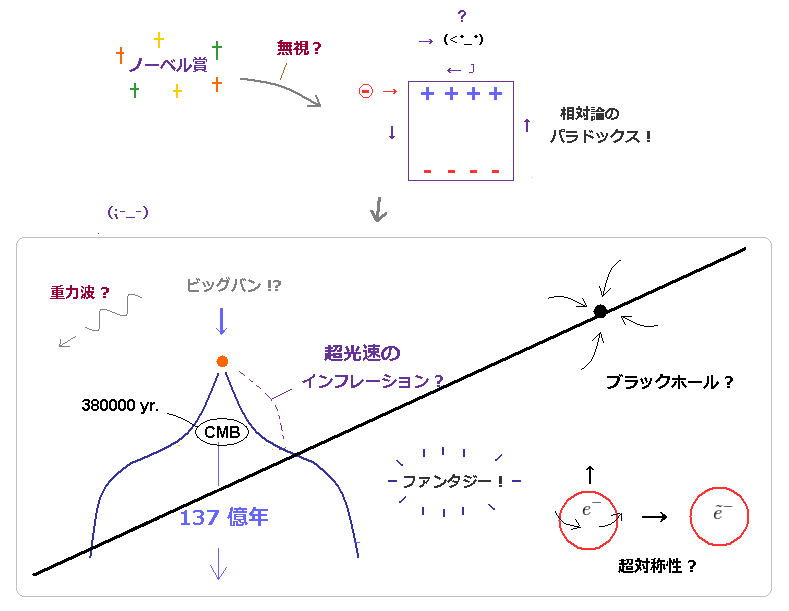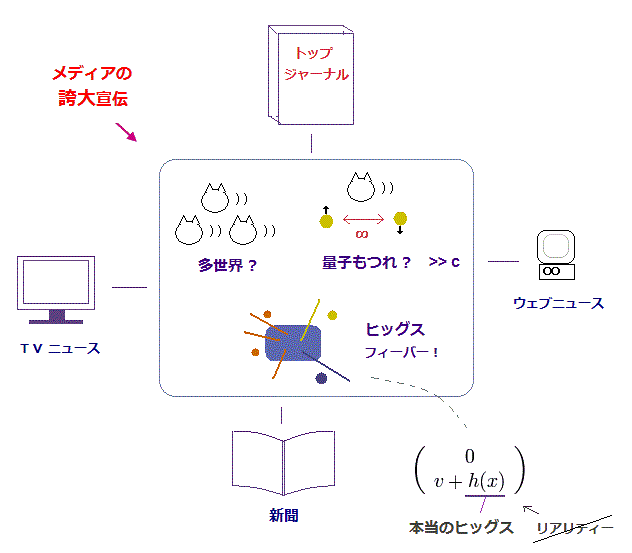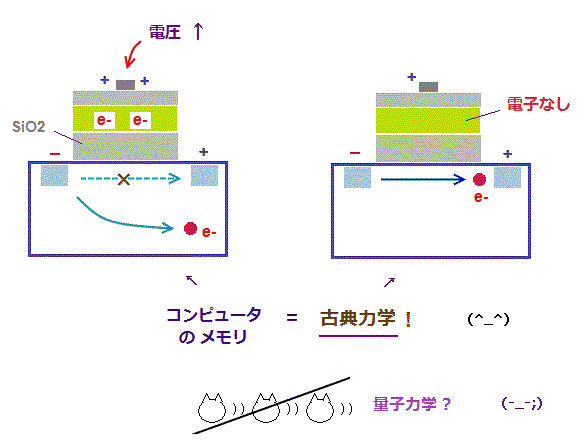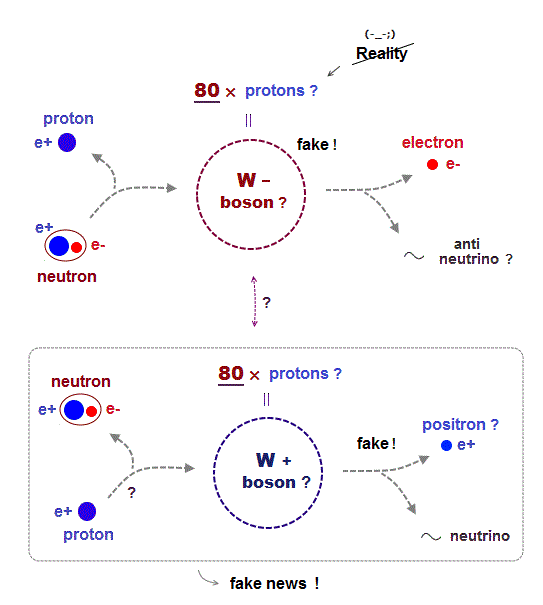
Home page
Einstein is wrong
Ehrenfest paradox
(Fig.1) Accelerate a rigid stick to velocity v But as seen by the stick (= K' ), the rigid stick unrealistically elongates ← paradox

In the upper Fig.1, a stationary rigid stick is accelerated to the velocity v by maintaining the same length L (= No force is applied to change the stick's length ), as seen by a stationary observer K.
But as seen by another observer K' moving at the same speed v as the stick, the rigid stick looks stationary and its length is unrealistically elongated by inverse Lorentz length contraction.
↑ According to relativistic Lorentz length contraction, the moving (rigid) stick's length unrealistically becomes shorter than the stationary stick.
↑ If the moving stick's lengths remains the original L as seen by K, the stationary stick's length seen by K' moving at the same speed as the stick must be unrealistically elongated.
Elongating a rigid stick needs far bigger energy than the small kinetic energy given to move the stick.
So this is clearly paradox disproving Einstein.
There is No absolute frame in this paradoxical Relativity which must accept the unrealistic rigid stick whose length is paradoxically changed depending on observers.
Fig.1 paradox is called Bell spaceship paradox disproving Einstein relativity.
When two spaceships or rockets accelerate at the same speed, maintaining the constant length L of a rope between them, this rope paradoxically snaps ( this-2nd-paragraph )
Because as seen by the observer moving at the same speed as spaceships, the rope's length is elongated due to the inverse Lorentz length contraction ( this-p.8-conclusion, this-p.6, this-p.1-left-last-paragraph ). = a stationary rope is longer than a moving rope in the paradoxical Relativity.
This-lower-Resolution of the paradox (= still No solution though ) says
"It was mentioned that the two rockets accelerate at the same time, but we have to ask, in which frame? (In our case they accelerate at same time in S frame.)"
"But in S' (frame of rocket A), it snaps because rockets didn’t accelerate simultaneously as per S' frame. The rocket ahead accelerates first and then the 2nd rocket accelerates, this leads to increase in gap between the two rockets, and therefore the string snaps (= from the viewpoint of the accelerating objects, the rigid objects unrealistically elongate, which disproves Einstein )."
This-p.8-4.conclusion says
"For two spaceships having equal accelerations, as
in Bell's spaceship example, the distance between the moving ships appears to be constant,
but the rest frame distance between them continually increases. This means that a cable
between the two ships must eventually break if the acceleration continues."
This Bell spaceship (= Lorentz length contraction ) paradox still has No solution ( this-p.1-introduction ).
(Fig.2) Two plates (= one is electrically positive, the other is negative ) start to be accelerated at the same speed v. = distance between two plates is unchanged or not (= electric energy potential changed or not ) is paradoxical seen by K and K'

In the upper Fig.2, two plates (= one plate is positively-charged, the other plate is negatively charged ) with the separation L is accelerated to the velocity v, maintaining the same separation L, as seen by a stationary observer K.
↑ The unchanged length and separation of two plates means the (electric) potential energy of the whole plates is unchanged (= only the whole kinetic energy is changed, because only kinetic energy is given to these plates ).
But as seen by another observer K' moving at the same speed v as the moving plates, the plates appear to stop and unrealistically elongate due to the inverse Lorentz length contraction.
↑ So as seen by the moving K', the separation L between two charged plates is elongated, which paradoxically changes the (electric) potential energy between them.
According to Einstein relativity, the force Fx or electric field (= E|| or Ex ) in moving direction (= x ) is unchanged regardless of objects' or force's motion ( this-p.14, this-p.35, this-p.15 ). ← So just moving objects or plates should Not change the length nor potential energy of them even in Einstein relativity.
This is clearly paradox disproving Einstein relativity, because the potential energy is unchanged as seen by K, but is changed as seen by K'
If the stationary rigid objects start to accelerate by getting kinetic energy, and become contracted by Lorentz length contraction, it clearly paradox, because the rigid objects cannot be shorter or longer just by far smaller kinetic energy.
For an (rigid) object to be shorter just by being accelerated (= only kinetic energy is given to the object ), some mysterious (= unrealistic ) attraction must suddenly appear and contract the rigid object, which lowers potential energy (= force × contracted distance ) and emits that potential energy by emitting light.
↑ If just giving the kinetic energy to an object also changes the potential energy of the object (+ kinetic energy ), it clearly violates total energy conservation law (= kinetic energy → kinetic + potential energy ), so the potential energy of the moving object-A with the same length should remains the same as the potential energy of the stationary object-A.
↑ As seen by another observer moving at the same speed as the moving object, the object's length remains the same (= Not contracted ), so the object's potential energy is unchanged, which does Not emit energy nor light.
↑ The potential energy is changed (= the object is Lorentz-length contracted by some mysterious force, emitting light energy ) or unchanged (= the object's length is unchanged, emitting No light energy ) depending on seen by different observers is clearly paradox disproving Einstein.
(Fig.3) Einstein relativity with No absolute frame causes serious kinetic energy paradox.

In the upper Fig.3, they give small kinetic energy to a small stationary stick which starts to move.
But as seen by this moving stick, the whole things (= large buildings, trucks.. ) around the stick appear to start to move in the opposite direction by paradoxically gaining far larger kinetic energy.
↑ Only a small kinetic energy given to the small stick unrealistically can move the whole world's objects by suddenly generating infinitely large kinetic energy ? ← paradox disproving Einstein relativity.
↑ This unrealistic relativistic kinetic energy causes paradoxical emission of light energy (= only as seen by the accelerating or decelerating small stick, the whole things or all charges around it are accelerating and radiating far larger light energy paradoxically ) and de Broglie wave interference.
This shows Einstein relativity with No absolute frame (= all things are relative ) is false.
In this case, the frame or world seen by the moving stick (= ② ) where larger buildings or trucks are moving (= by only the far-smaller stick's kinetic energy ) is illusion. ← Einstein relativity violates energy and momentum conservation law
There is only one real frame or one world (= ① ) where a small stick is moving (= with respect to the medium ) by a small kinetic energy while other larger objects remain stationary = only this frame conserving total energy and momentum is real.
(Fig.4) As seen by a lighter electron, a heavier nucleus is unrealistically moving, violating momentum, energy conservation.

In Einstein relativistic world, there is No absolute frame or motion. ← Whether things are moving or not changes depending on which observers are watching.
In the upper Fig.4, a lighter electron is attracted and moving toward a heavier nucleus (= almost stop due to nuclear larger mass ) by Coulomb electric force between them.
But according to Einstein relativity allowing infinite unreal observer-dependent frames, as seen by the lighter electron, the heavier nucleus appears to be unrealistically attracted and moving toward the stationary electron.
↑ This relativistic frame clearly violates energy-momentum conservation, disproving Einstein relativity.
When a lighter electron gets closer to a nucleus, gaining kinetic energy (= 1/2mv2, m and v is mass and velocity of an electron ), as seen by the lighter electron, the heavier nucleus is unrealistically moving with far larger kinetic energy of 1/2Mv2 (= M is nuclear mass far larger than the smaller electron's mass m ).
And if the total momentum is conserved, the lighter electron should be moving at higher velocity (= v ) than the heavier nucleus that almost remains at rest. ← Einstein relativity is false, cannot conserve momentum nor energy.
↑ The total momentum is conserved to be zero = mv + MV = 0 ← a lighter electron's (= m ) velocity v must be much higher than the heavier nuclear (= M ) velocity V (← m < M, v > V ).
So there is only one real frame conserving total energy and momentum disproving Relativity. ← When a particle is moving with respect to the real medium (= one real frame ), this particle has real kinetic energy (= converted to light energy ) and generates de Broglie wave.

Feel free to link to this site.